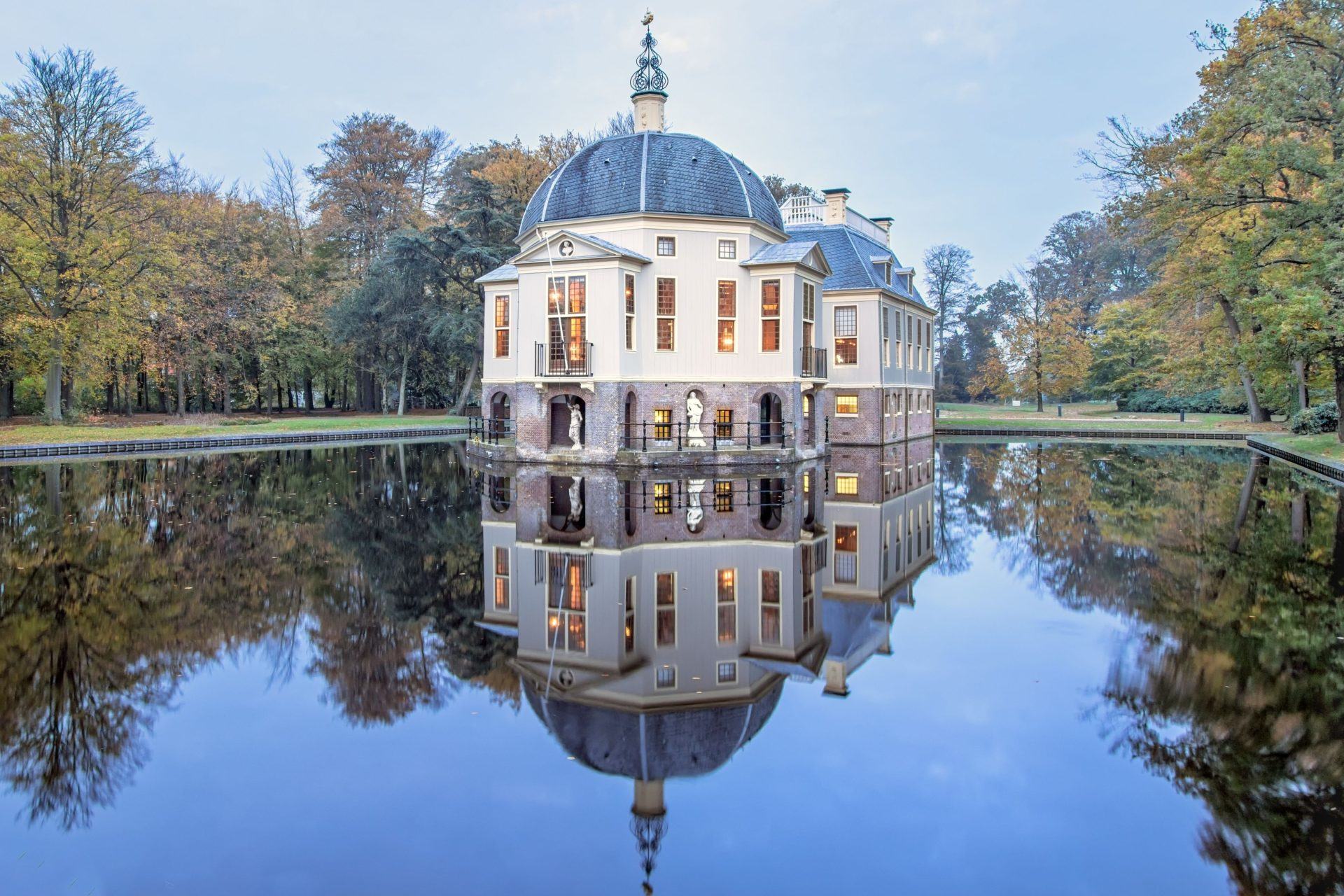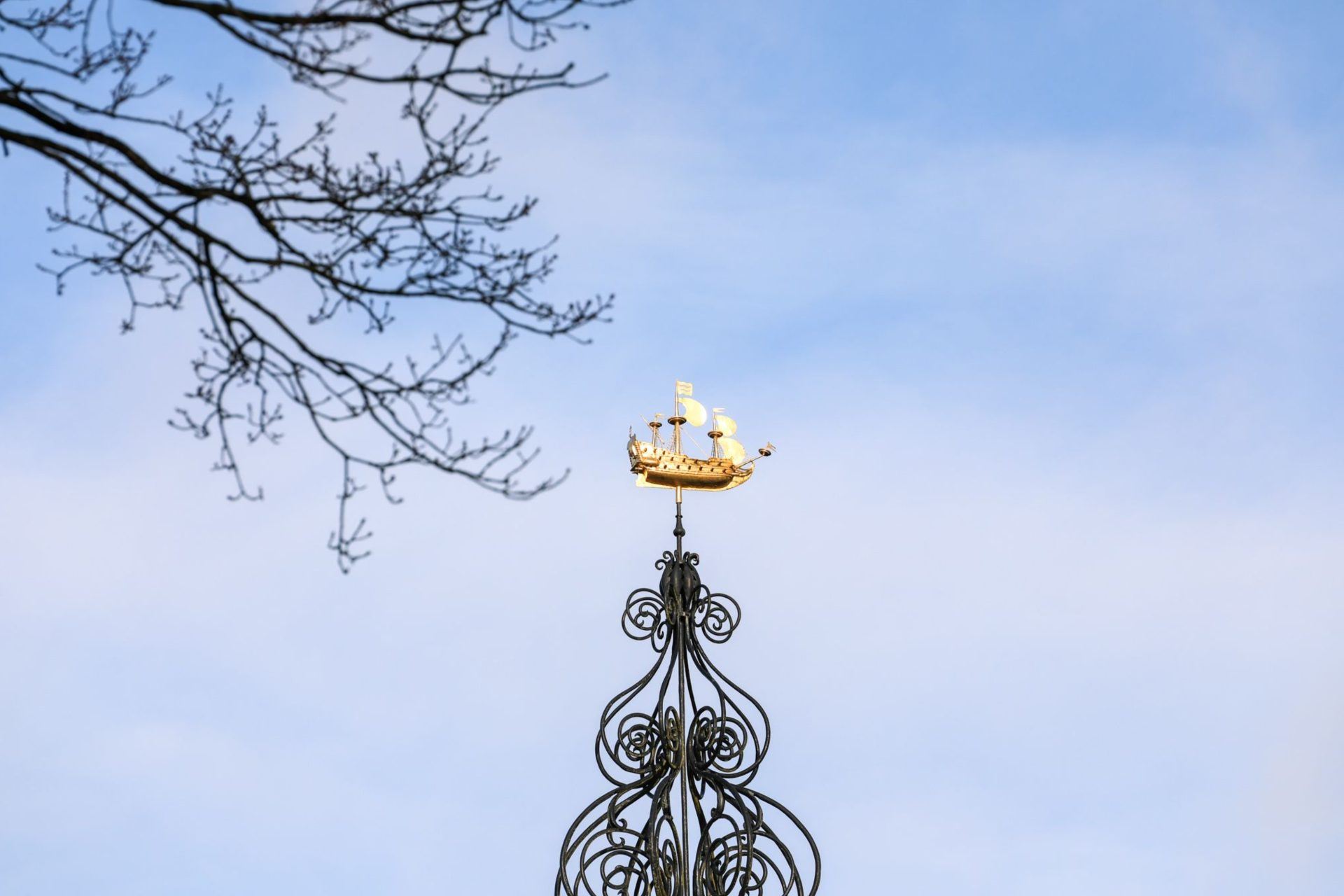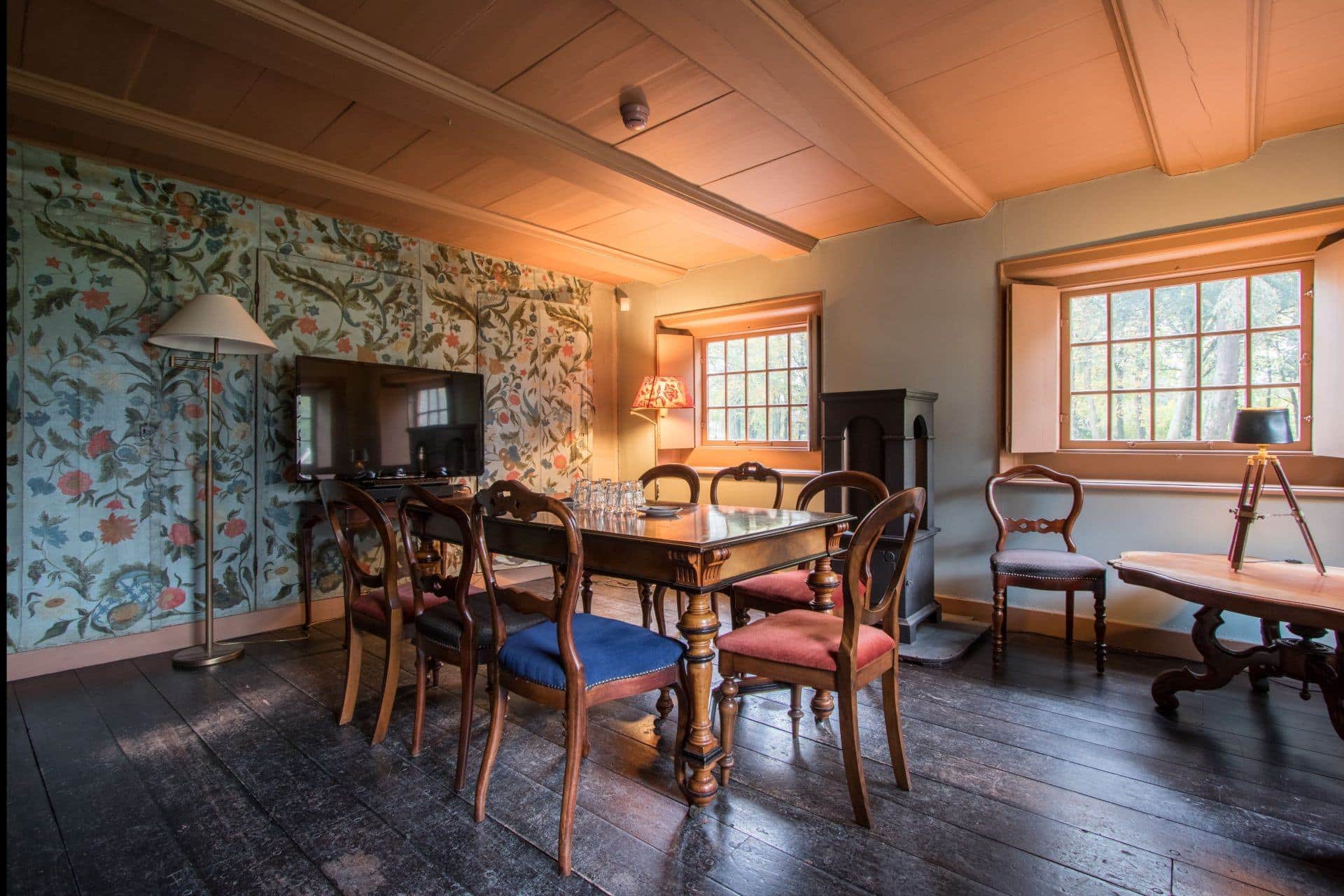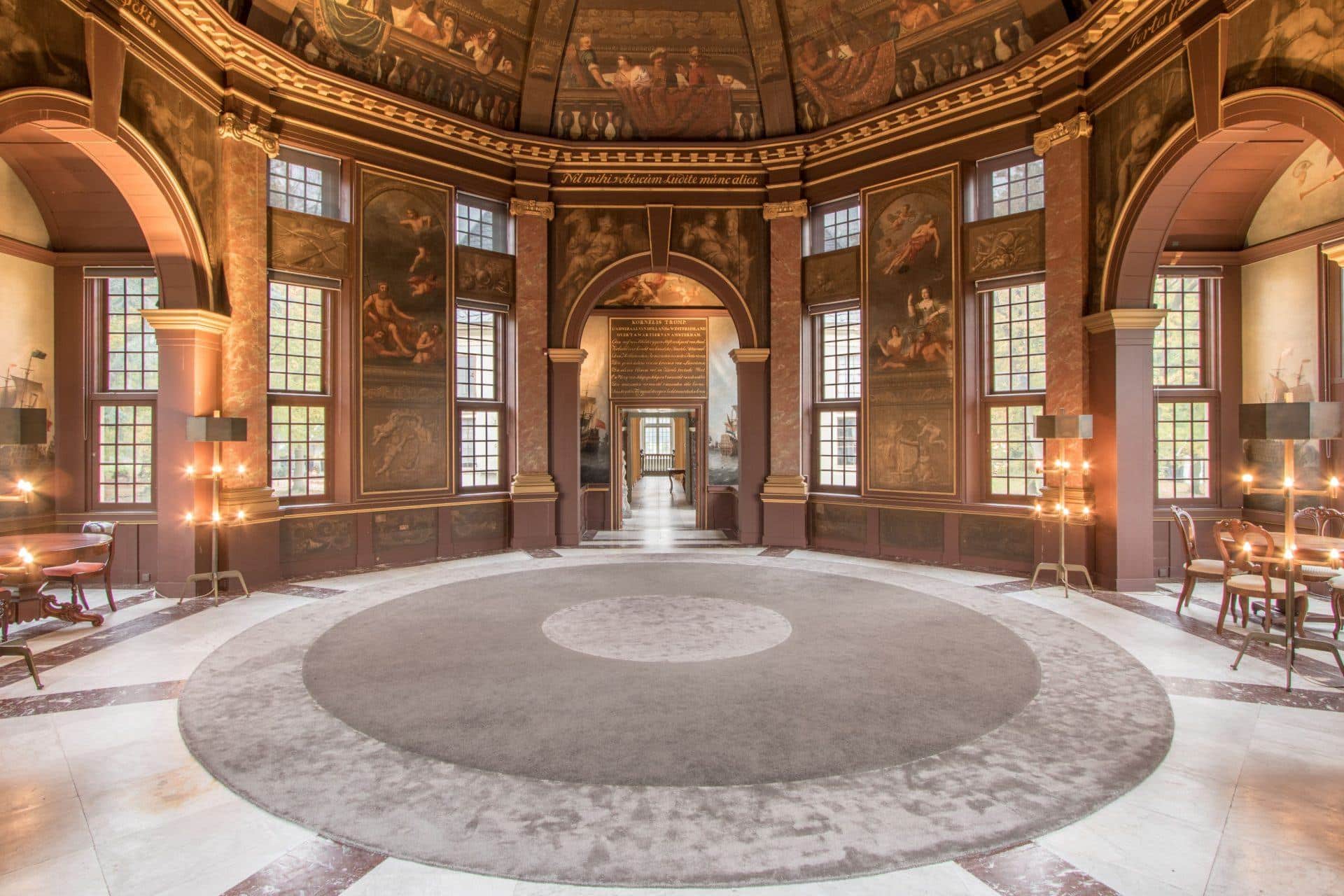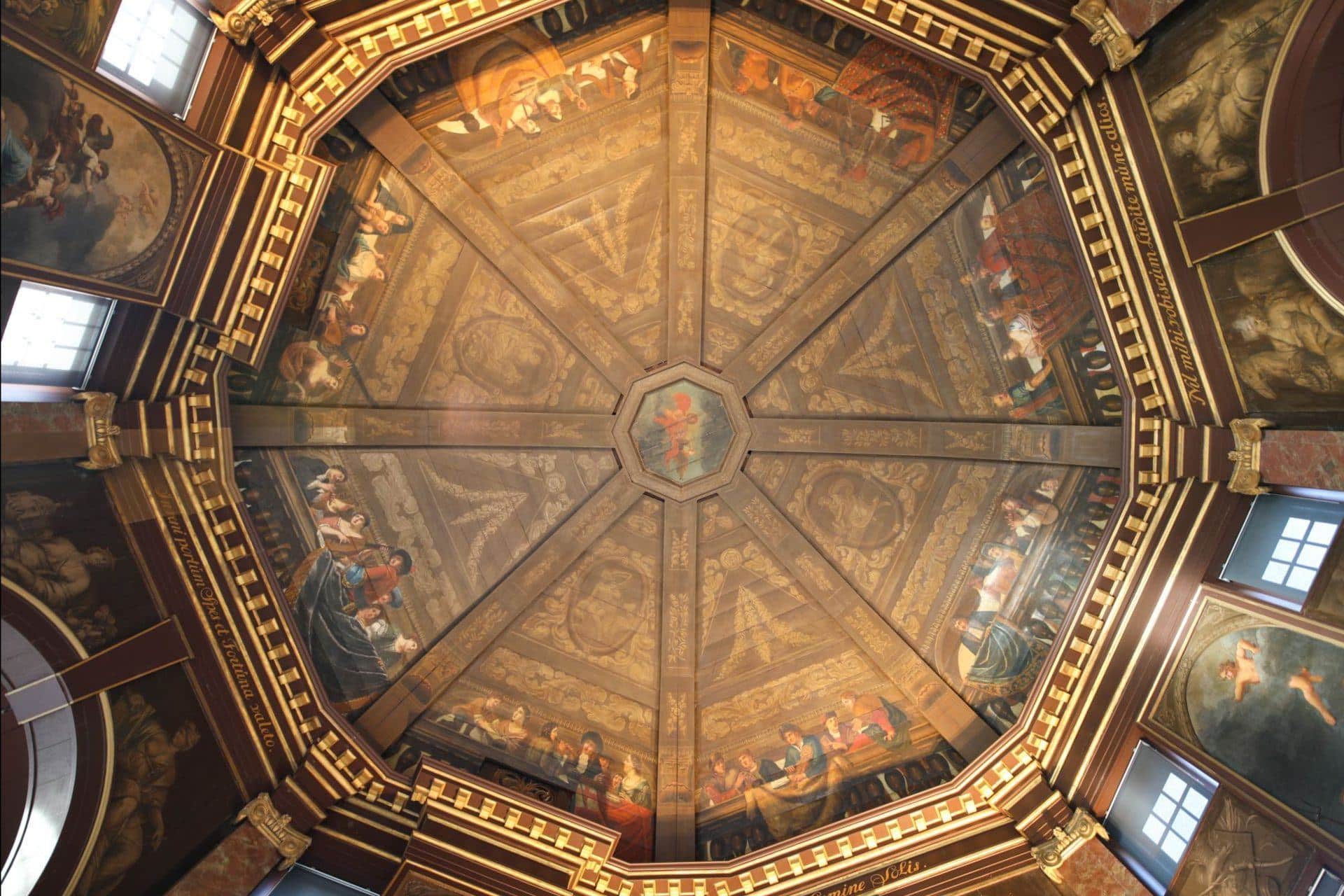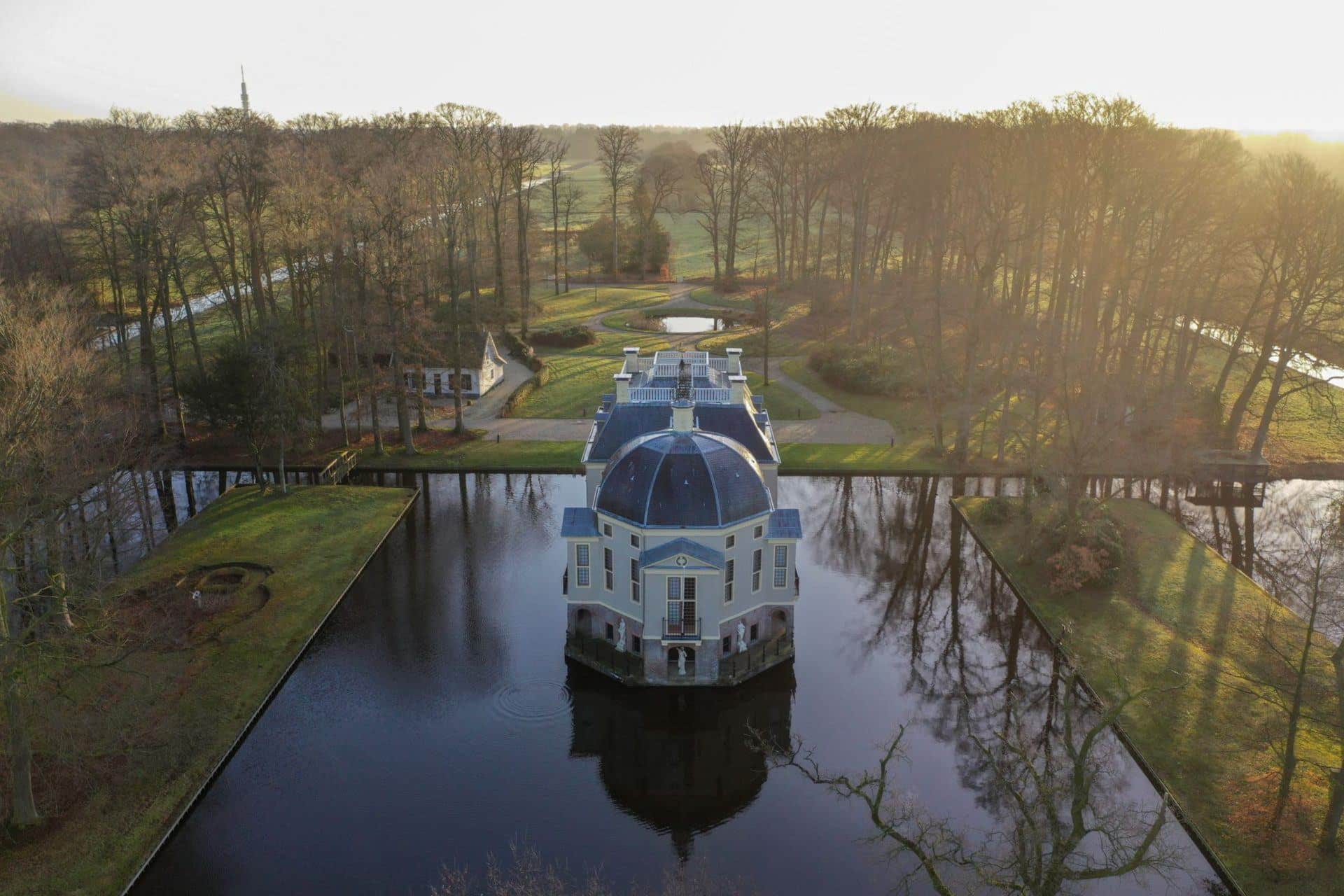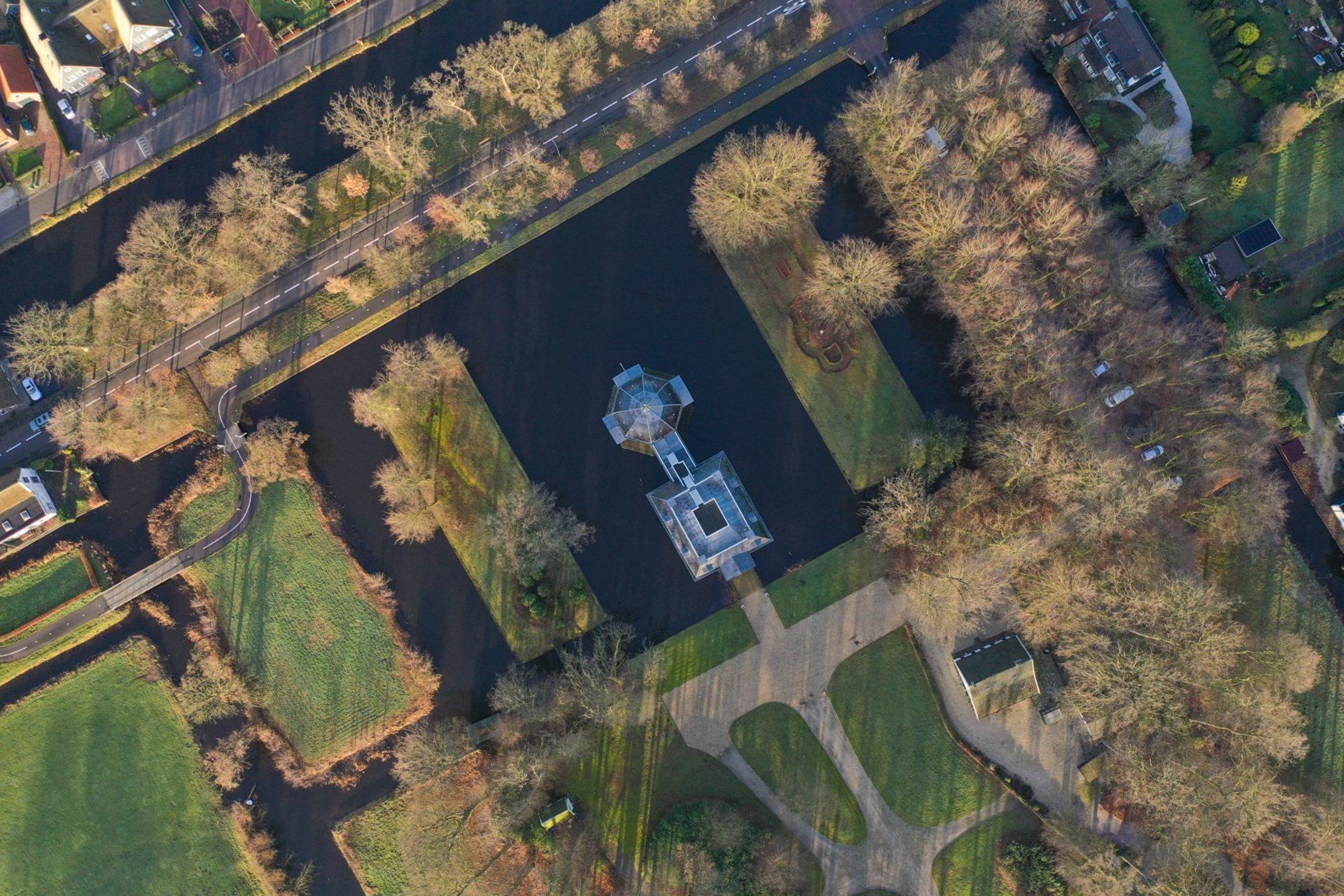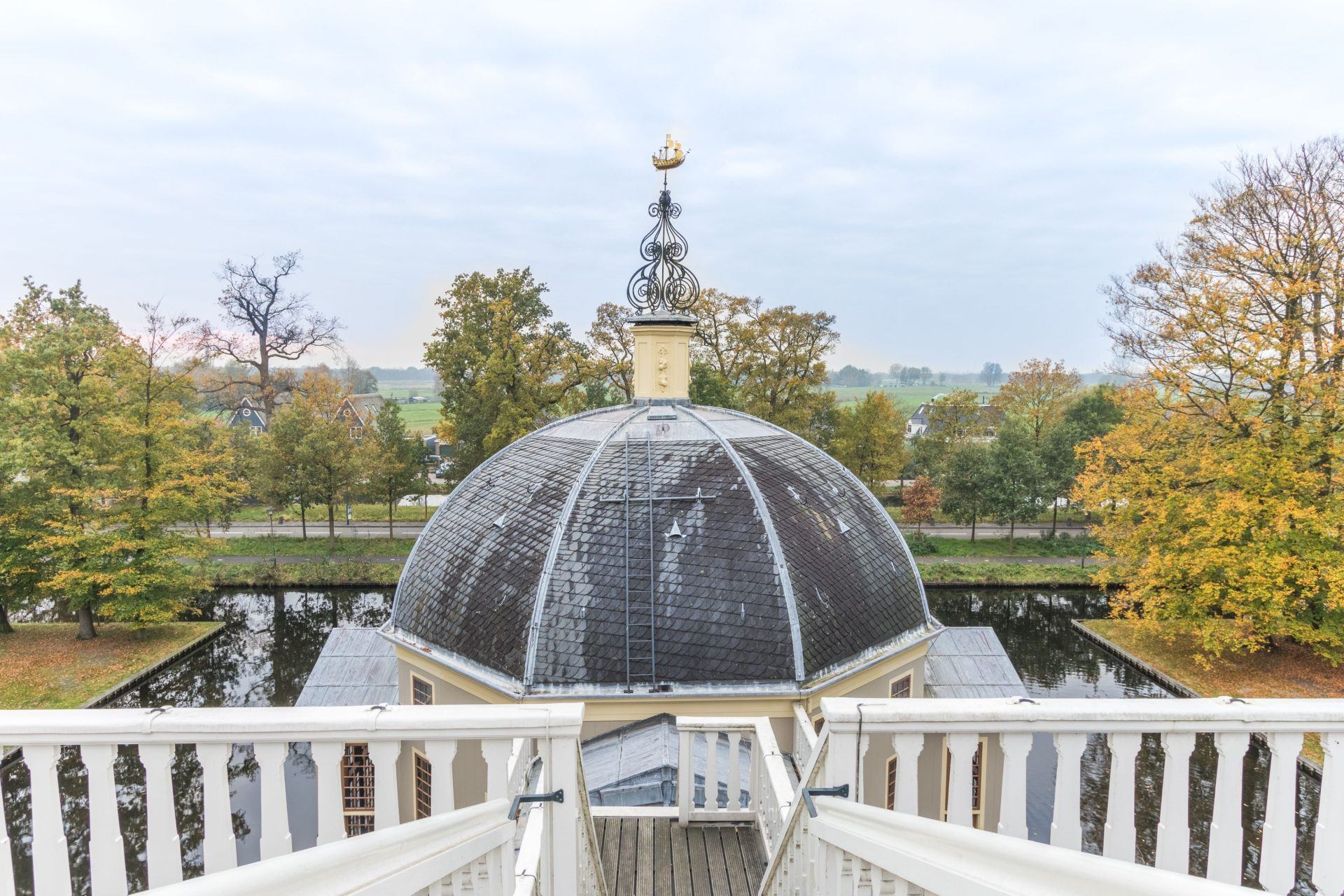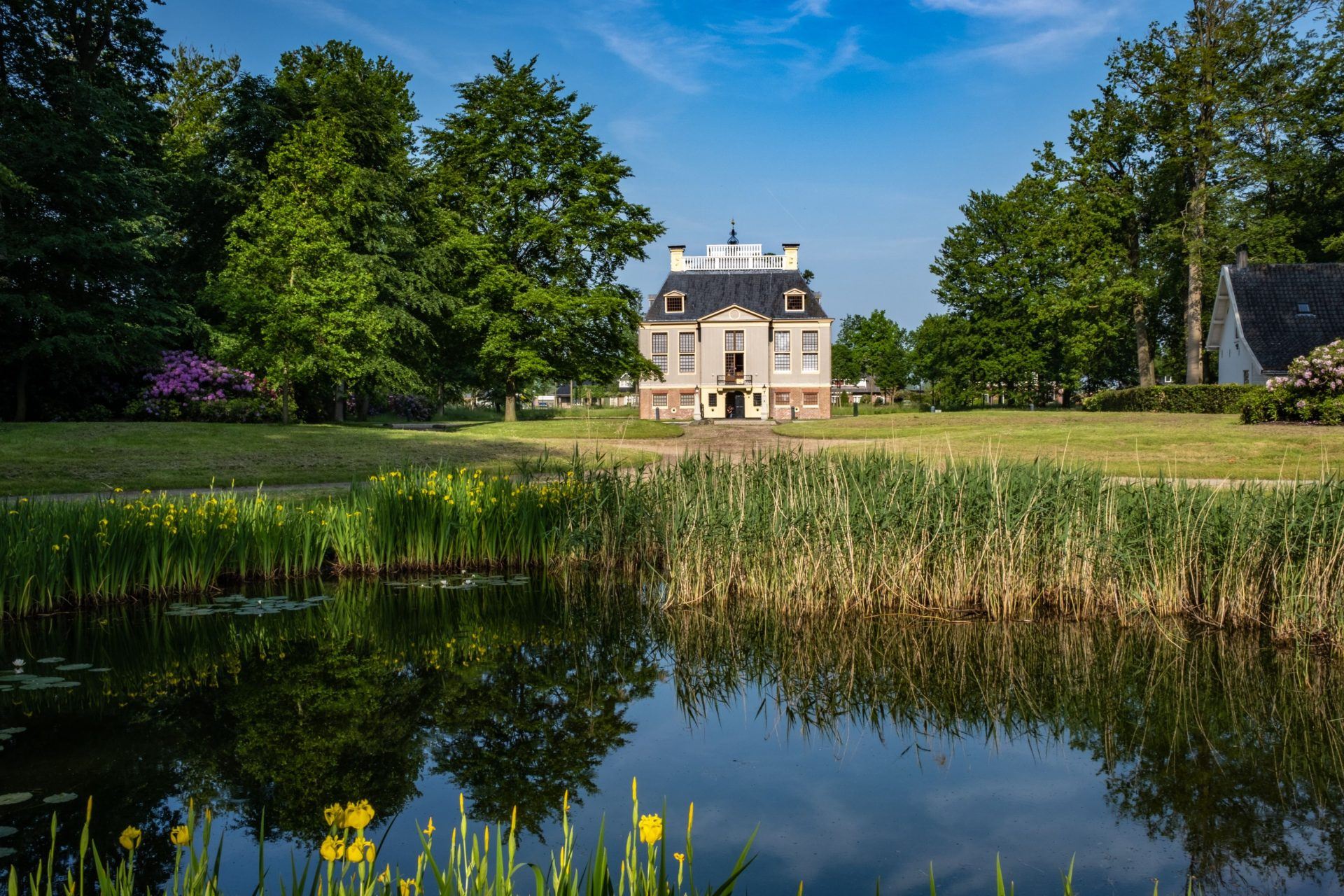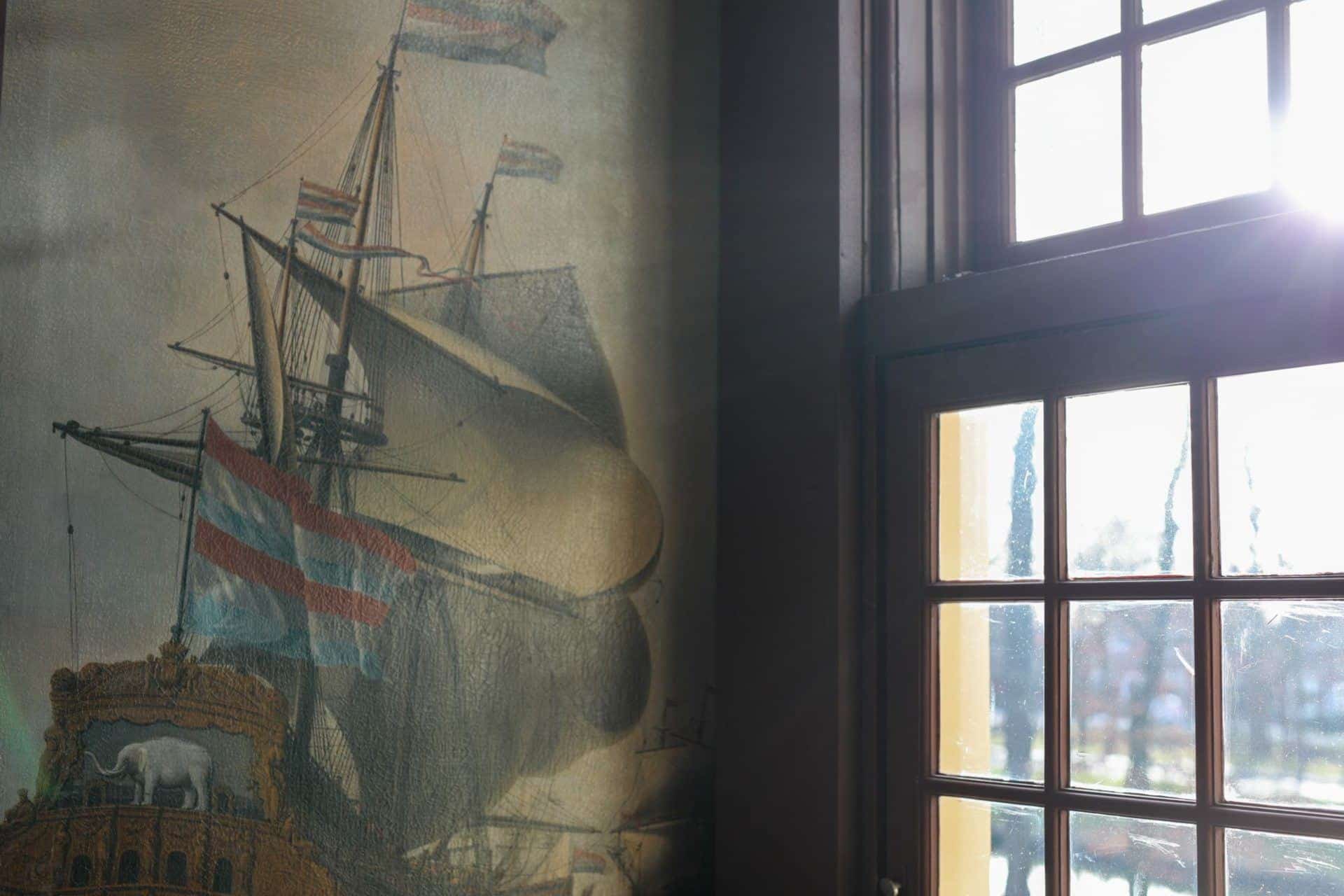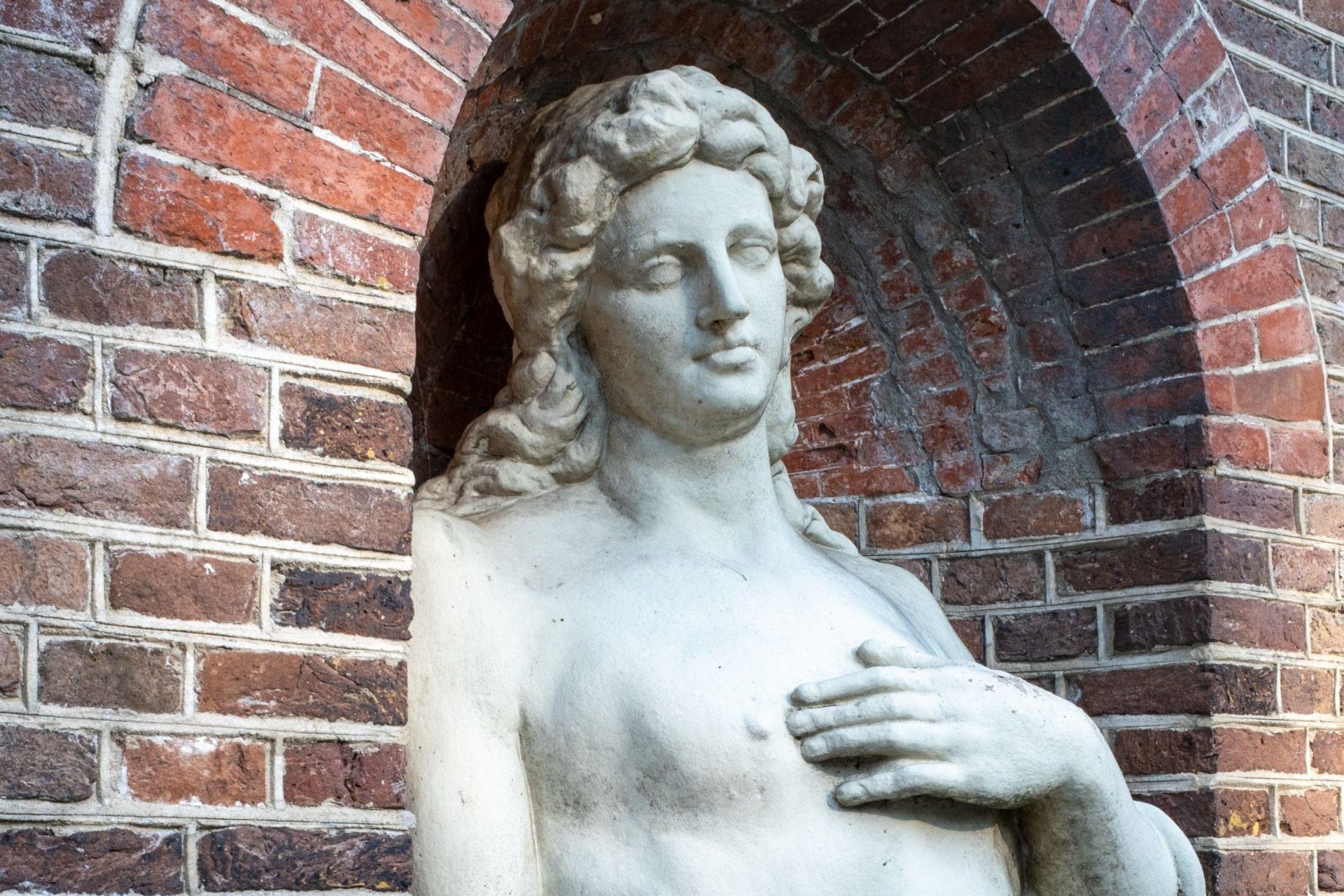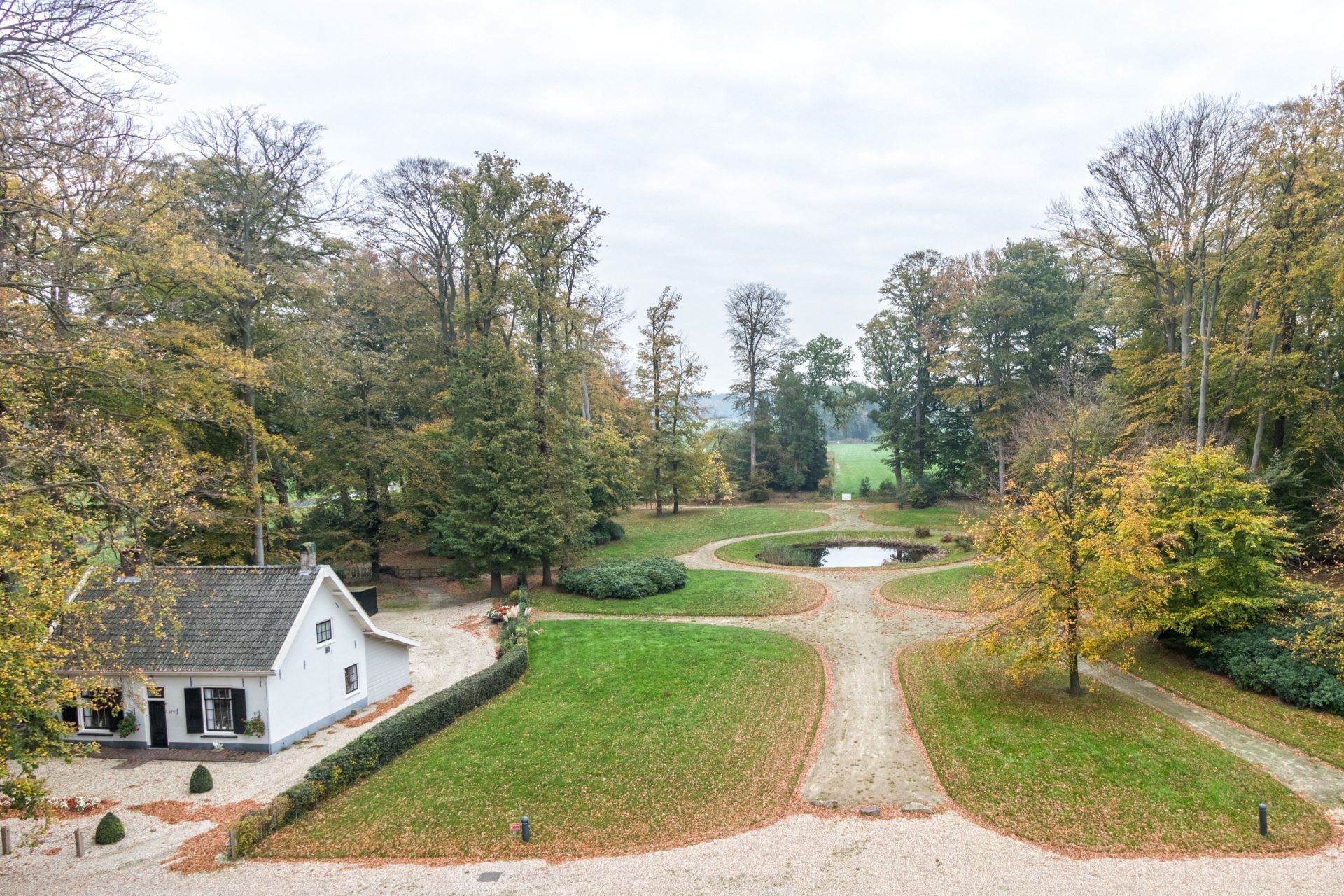Buitenplaats Trompenburgh
Trompenburgh is a unique top-100 monument. This former country estate of seafarer Cornelis Tromp (1629-1691) from the seventeenth century has largely survived the centuries unchanged. Inside you will still find a large part of the original paintings. The striking building is currently in use as (head) office of Monumentenbezit. We are currently working on the large-scale restoration.
Location
's-Graveland
Year built
About 1675
Building Style
Dutch Classicist style
Principals
Cornelis Tromp and Margaretha van Raephorst
Past function
Buitenplaats
Details
The paintings and unique dome room
Owned by Monumentenbezit
Since 2016
Wheelchair accessible
Partly after restoration
Visitor information
Trompenburgh Country Estate is currently being restored. From May 2025, we will temporarily open our doors for a look behind the scenes. Follow the restoration via the link below.
Visiting address:
Zuidereinde 43, 1243 KK 's-Graveland
Until the early seventeenth century, the area around 's-Graveland was an unsafe place. It was a no man's land. The nearest villages were Ankeveen and Kortenhoef. Starting in 1625, permission came to reclaim the area. Prominent Amsterdammers - such as the mayor Andries Bicker - saw draining lakes and reclaiming land outside the city as a smart investment. The land was leased to farmers and could eventually be sold.
Two of the lots came into the hands of Joan van Hellemont (1616-1665), the very wealthy husband of Margaretha van Raephorst (1625-1690). After the death of his mother Dieuwertje Bicker, sister of Amsterdam mayor Andries Bicker, lots 20 and 21 became Van Hellemont's property in 1654. After his death, Margaretha inherited the buitenplaats.
In 1667 Margaretha married Cornelis Tromp, who rented nearby lots 18 and 19 from his brother Johan Tromp. Together they had a large plot of land with several estates. But they could not enjoy them for long - because five years later, in 1672, the estates were destroyed during the Year of Disaster.
The couple had a new country house built in the following years. And it would be an imposing building. Margaretha, after all, had become a wealthy woman through inheritance from her first marriage. Cornelis also had a good income, as lieutenant-admiral of the State Fleet - which was supplemented by the monies he raised from side jobs. In 1674 - a few years before the new country house was completed - his fortune was estimated at 100,000 guilders and Margaret's at nearly 300,000 guilders. Thus they belonged together to the 100 wealthiest families in the country.
The house is named after Cornelis Tromp (1629-1691). But who was he? Cornelis was born the son of the seafarer Maerten Harpertsz. Tromp (1598-1653). From an early age, he went to sea with his father. Maerten was very popular and was nicknamed "Bestevaêr" by his crewmates, meaning something like "best little father. He died in 1653 at the Battle of Ter Heijde, an important battle against the English. Cornelis was 23 years old at the time.
The ambitious Cornelis was only a captain at the time, but still submitted a request to be appointed lieutenant admiral in place of his father. The request was not seriously considered.
Cornelis made every effort to follow in his father's footsteps, but often found himself at odds with his superiors, including Lieutenant Admiral(-General) Michiel de Ruyter (1607-1676). His behavior even led to his dismissal from State service in August 1666. In 1673 Prince William III managed to calm the quarrel between Cornelis Tromp and Michiel de Ruyter, after which Cornelis was reinstated.
He fought in the last three Sea Battles of the Third English War: the First and Second Battle of the Schooneveld and the Battle of Kijkduin. In May 1676, Cornelis became commander-in-chief of the Danish fleet. He won several victories over the Swedes. In gratitude for his services rendered, Cornelis was elevated by the Danish king to Count of Sölvesborg (Syllisburg, formerly the name of his country estate) and was appointed a Knight of the Order of the Elephant.
On May 29, 1691, Cornelis died at home in 's-Graveland. He shared his grave with his father in the Oude Kerk in Delft.
Trompenburgh is a unique estate that has remained largely unchanged. Construction of the estate began around 1675 and the roof was completed in 1678. The estate was then named Syllisburg, referring to the burial title Cornelis obtained from the Danish king. Only after Cornelis' death was it renamed Trompenburgh.
The house consists of three building parts: 1) the corps de logis (the main building) which is connected by means of the 2) intermediate member to 3) an octagonal pavilion with dome. In the architecture of the residence there are many references to the seafaring life of the Tromp family. For example, the house lies in the water, like a ship in the sea, and is flanked by islands. The roof is designed like a ship's deck, and the cupola room depicts naval battles.
Cornelis and Margaret received well-to-do guests at the buitenplaats. The bird skies, found under the white ceilings during the restoration, must have given seventeenth-century visitors the impression that they were in the open air. The most impressive rooms were located on the bel-etage, with the painted dome room as the absolute highlight.
Centuries later, the estate is undergoing a large-scale restoration. It came into the hands of the State after the death of owner Frans Ernst Blaauw. Since 2016, it has been in the hands of Monumentenbezit. In 2020, we started the restoration . The restoration consists of four parts : the restoration of the building, making the building more sustainable, renovating the garden and expanding the opening to the public. One of the most important parts of the restoration is the dome hall. The finishing and decoration of the hall will be returned to the original situation. We are also bringing back original decorations in other places, for example by exposing the paintings on the ceilings. From May 2025, the estate will temporarily open to the public, offering a look behind the scenes of the restoration.

